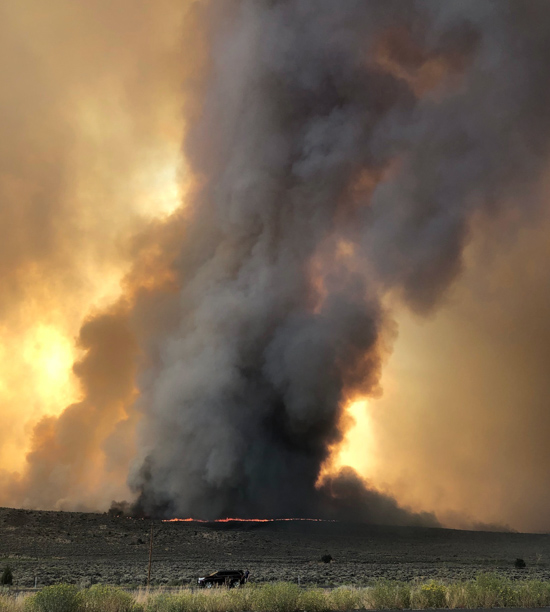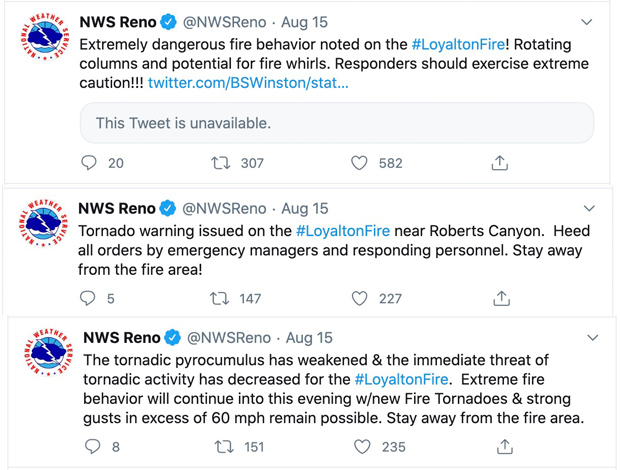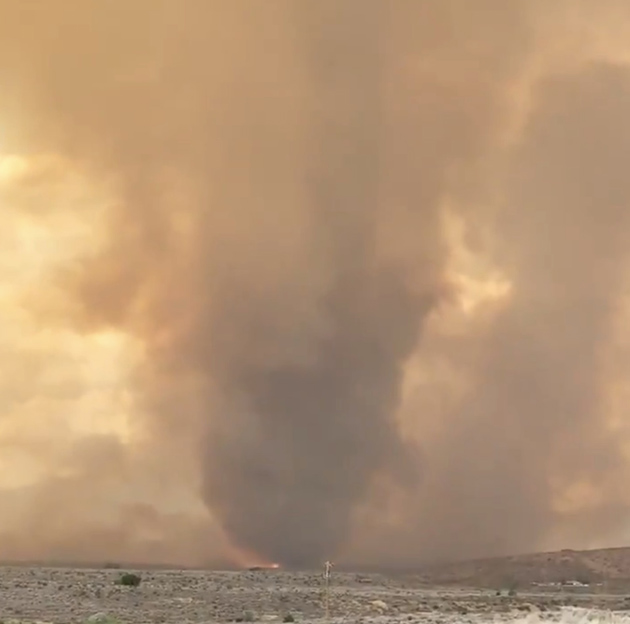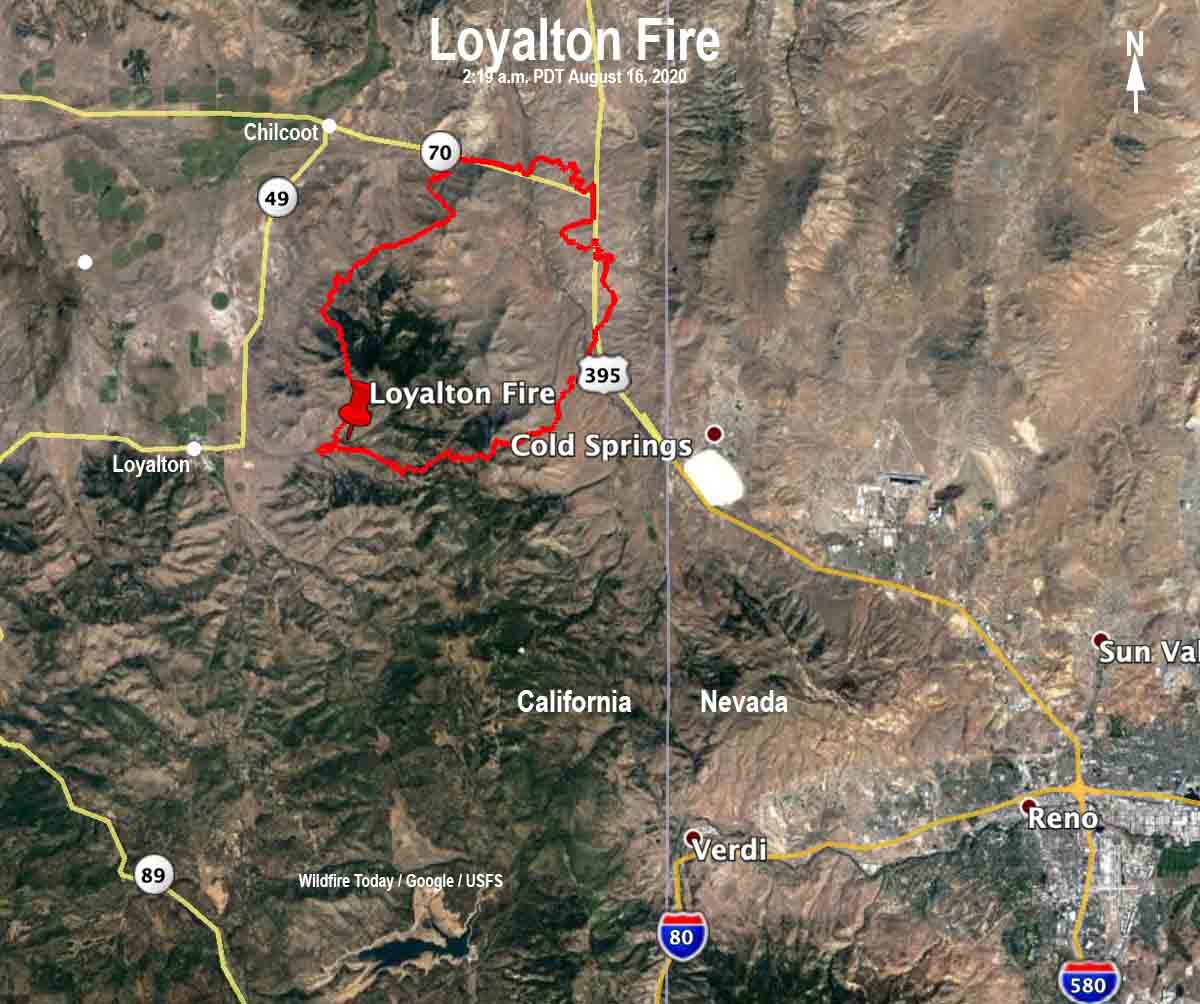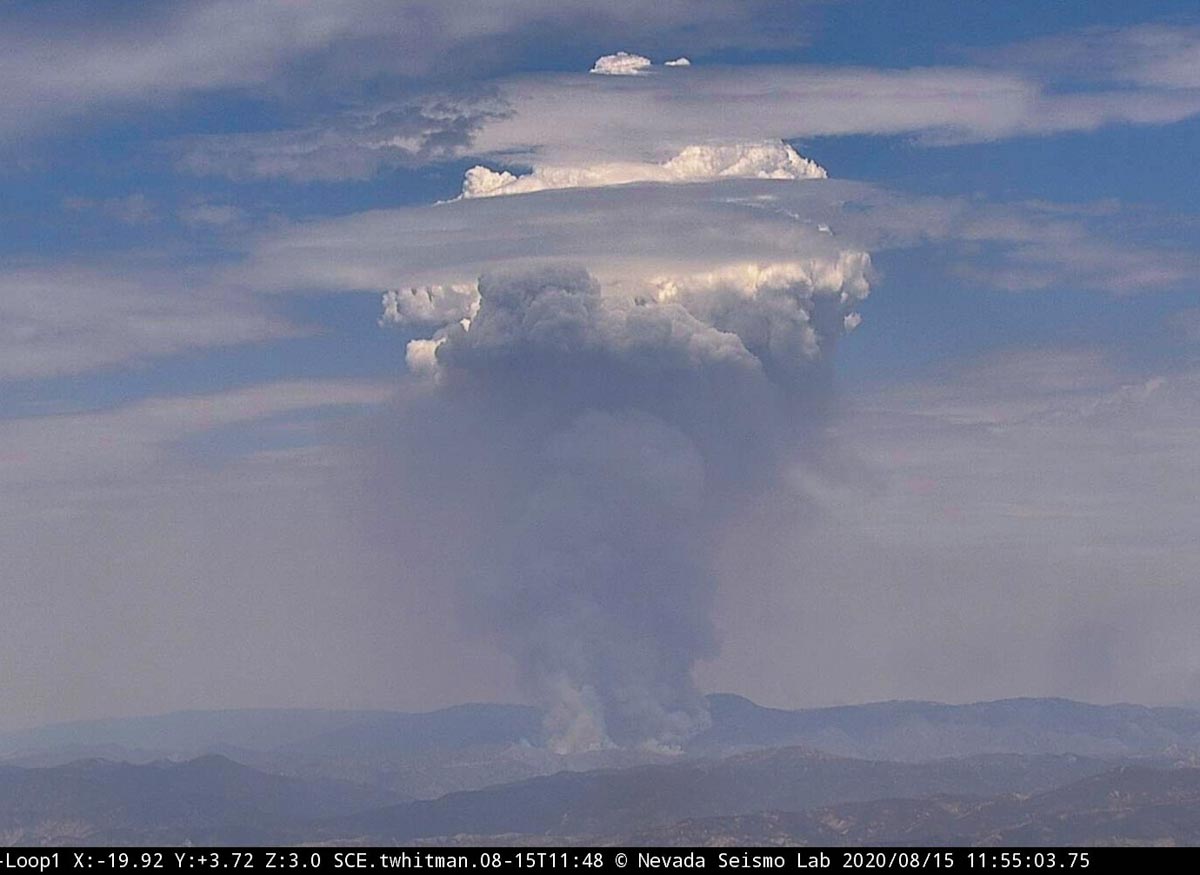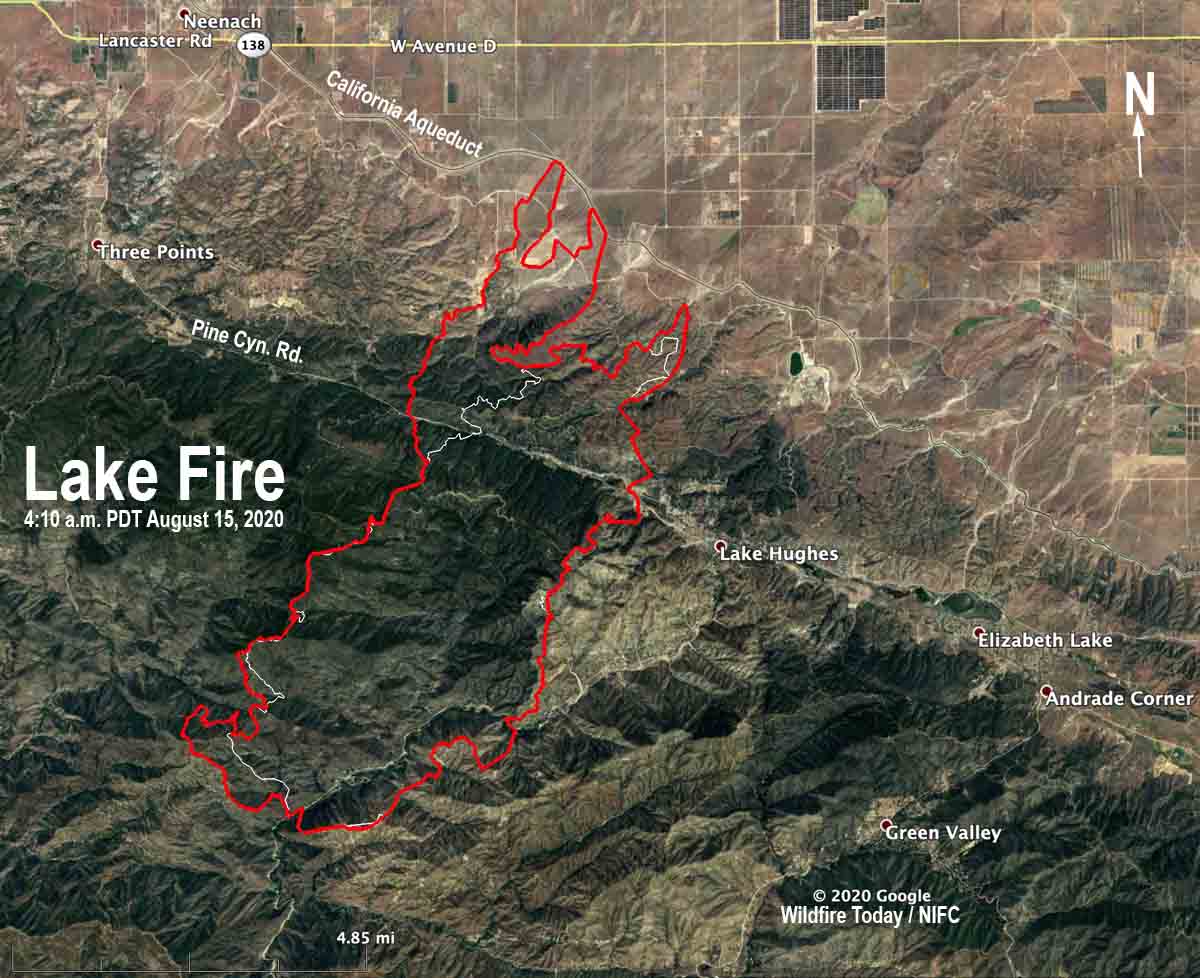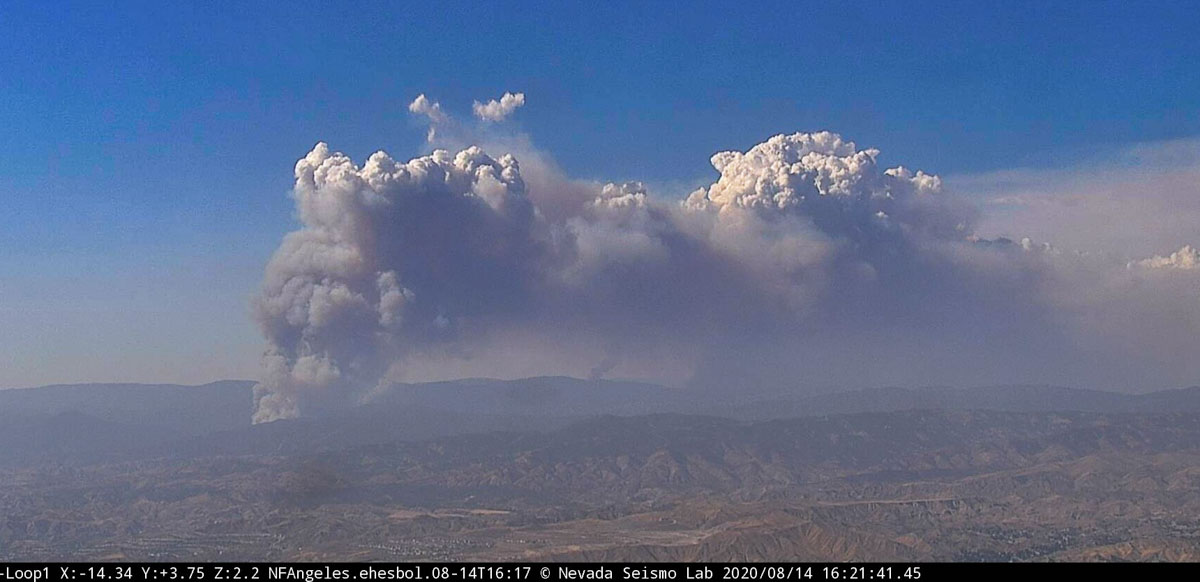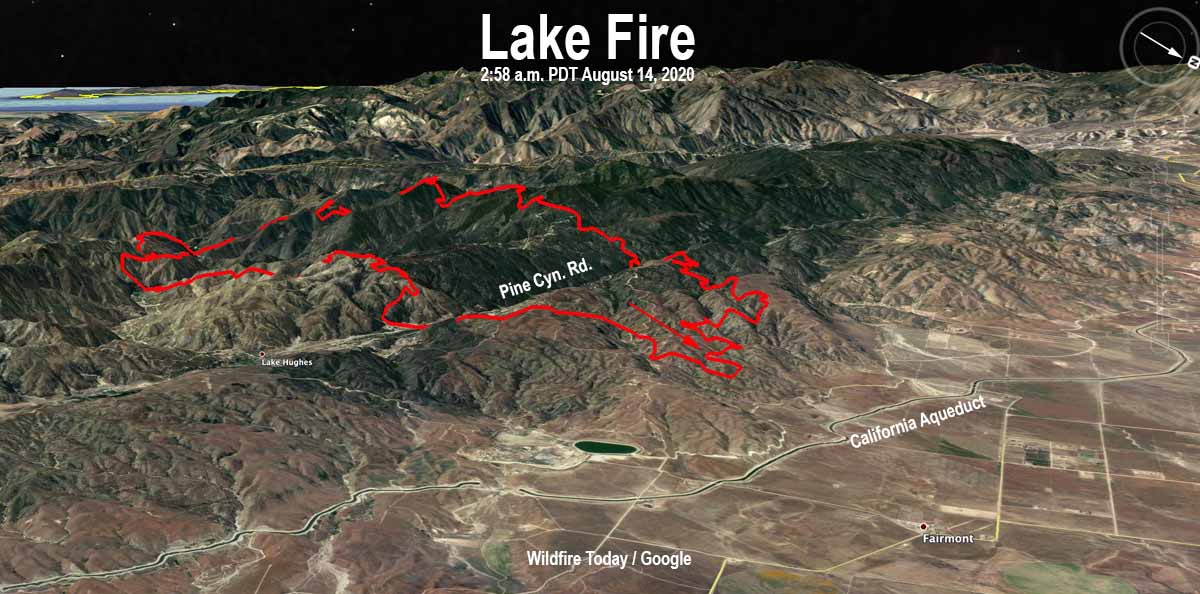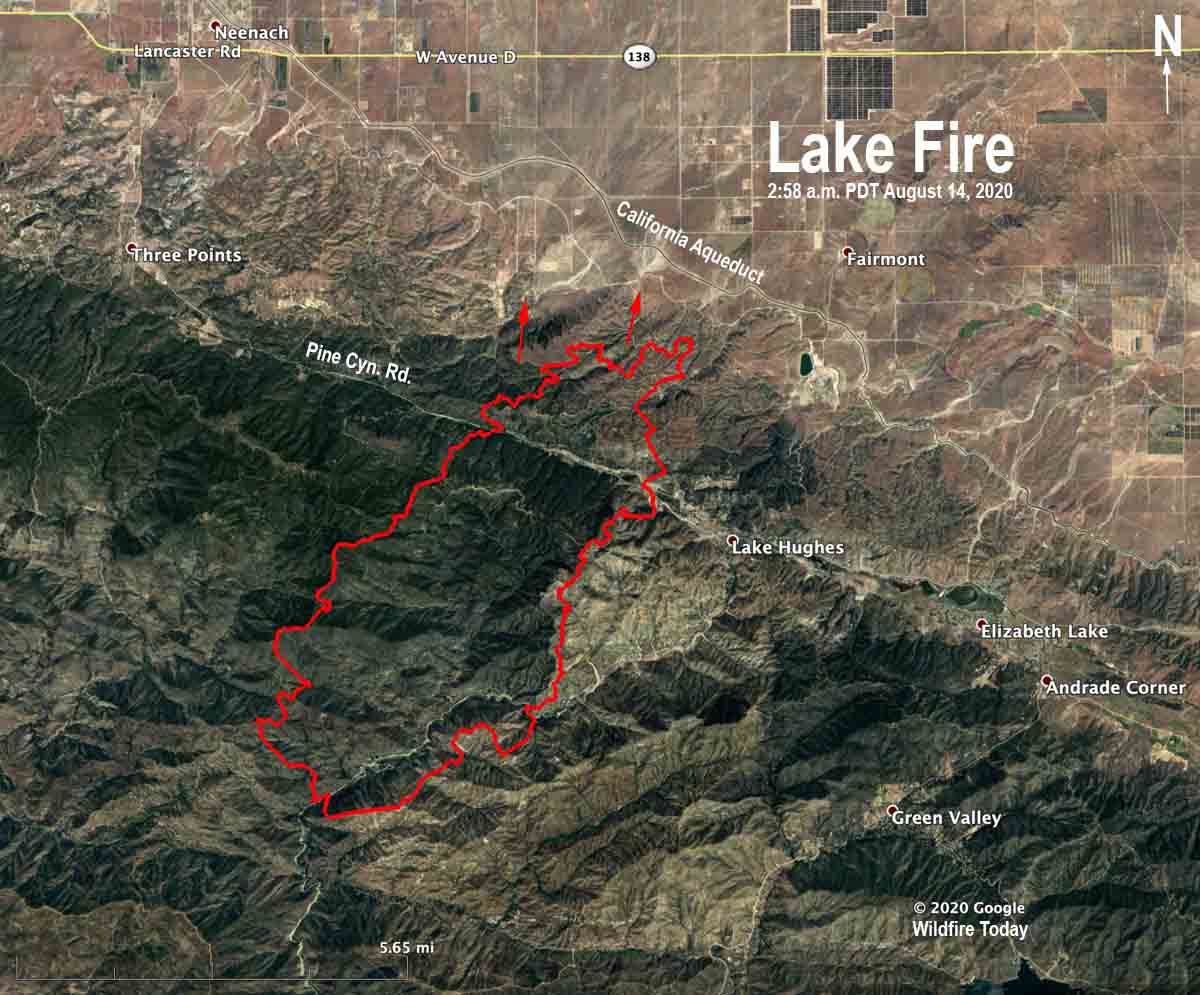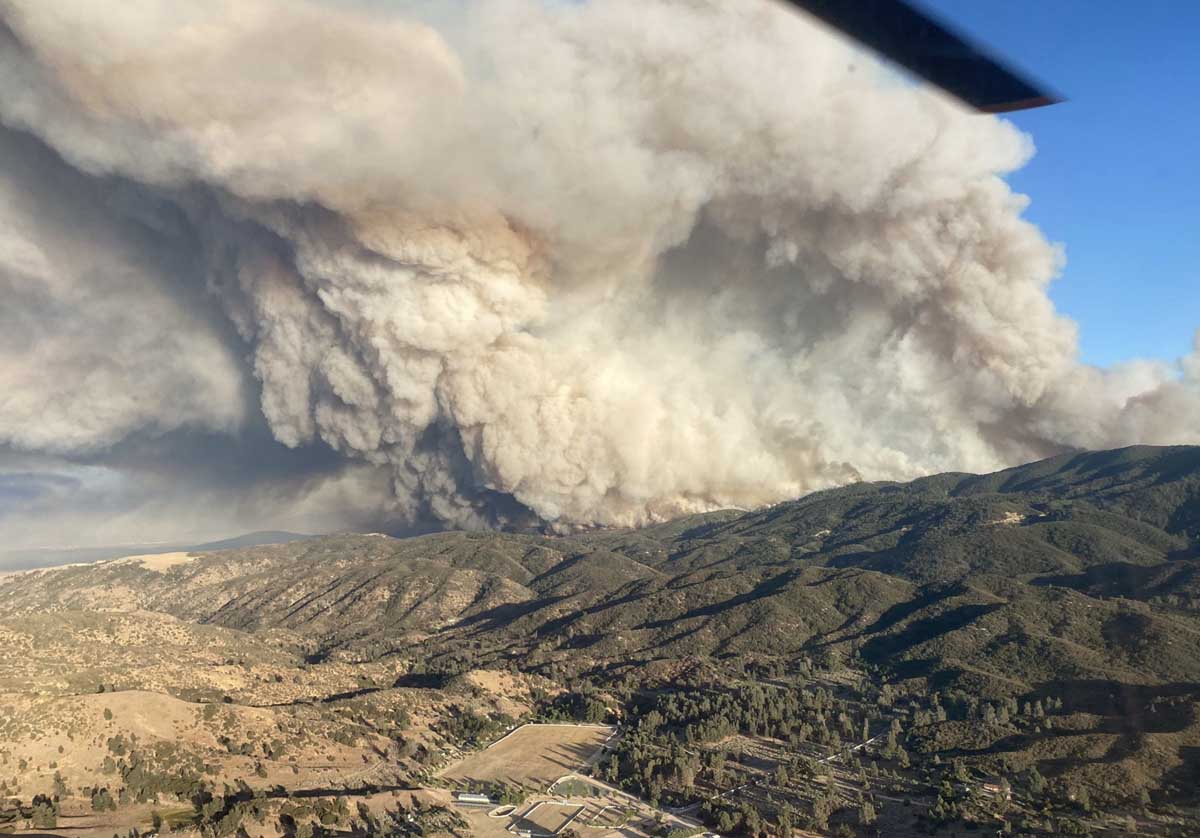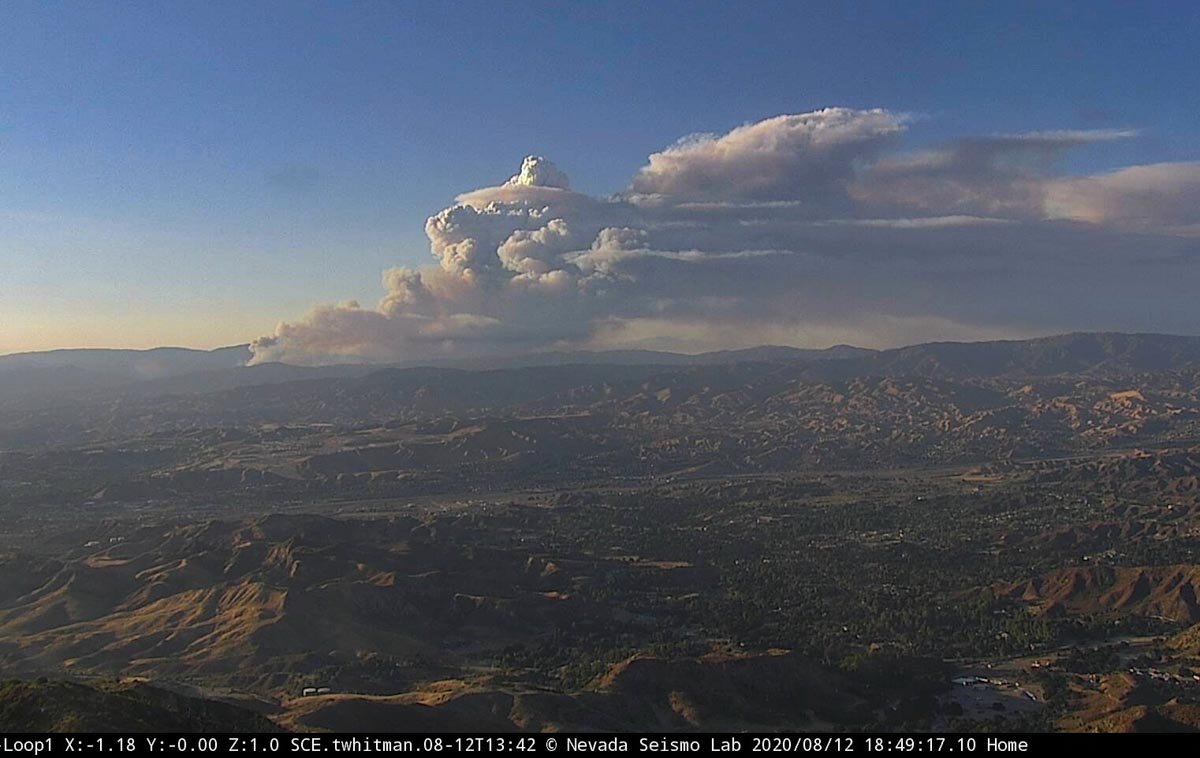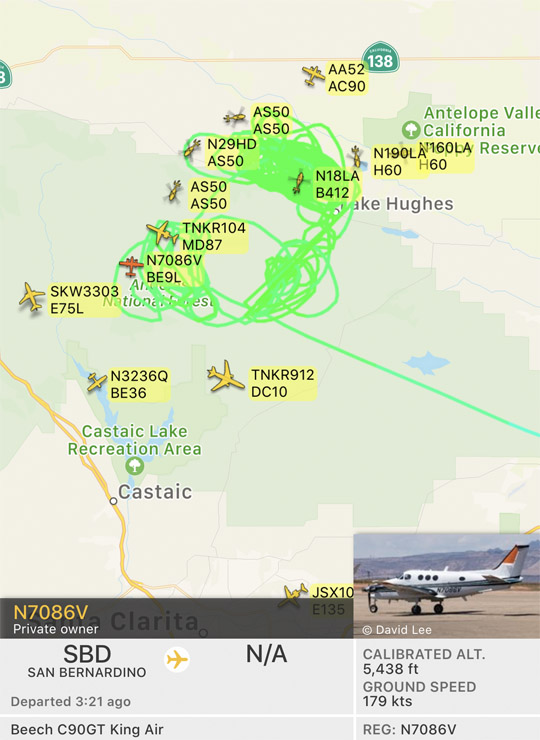August 17, 2020 | 6:22 p.m. PDT

Not much additional information is available about the River Fire. Monterey County has current evacuation information. CAL FiRE has not updated the size since they announced it was 2,800 acres this morning.
(To see all of the articles on Wildfire Today about the lightning-caused wildfires in California, including the most recent, click HERE.)
Five structures have been damaged and there have been four “Confirmed Fire Personnel and Civilian Injuries” according to CAL FIRE.
Resources assigned include 10 hand crews, 2 helicopters, 55 fire engines, 9 dozers, and 6 water tenders for a total of 520 personnel.
August 17, 2020 | 7:13 a.m. PDT
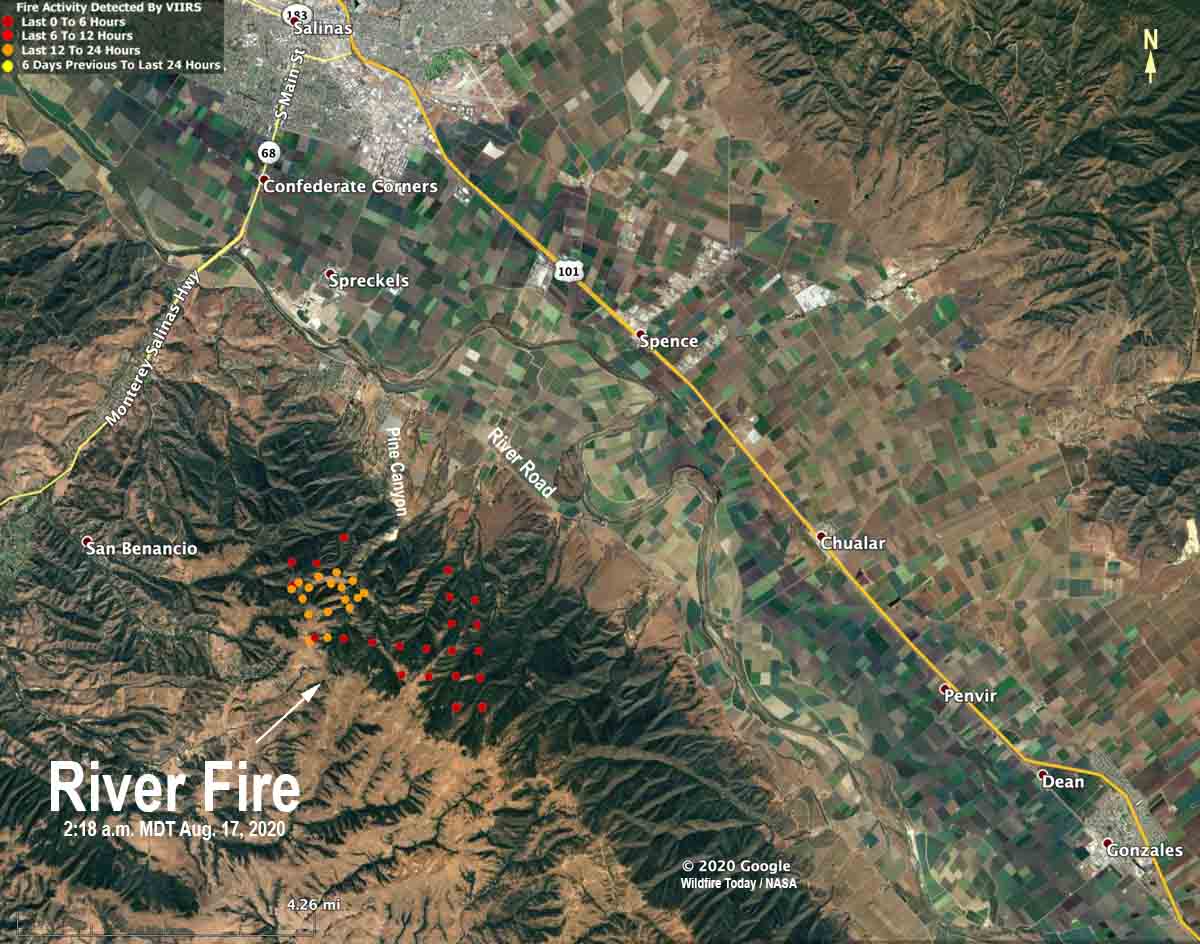
Monday morning at 6 a.m. PDT CAL FIRE reported that the River Fire five miles south of Salinas has burned 2,800 acres and threatens 1,500 structures. Five structures have been damaged but none destroyed. Four firefighters have suffered heat-related injuries.
The fire has crossed Pine Canyon Road, CAL FIRE said, and is moving south toward River Road.
Mandatory evacuations were in effect at 6 a.m. PDT August 17 for Pine Canyon Road, Parker Road, Laurel Lane, and Trimble Hill Lane. The evacuation center is at Buena Vista Middle School, 18250 Tara Drive in Salinas. More information about evacuations can be found at CAL FIRE.
August 16, 2020 | 8 p.m. PDT
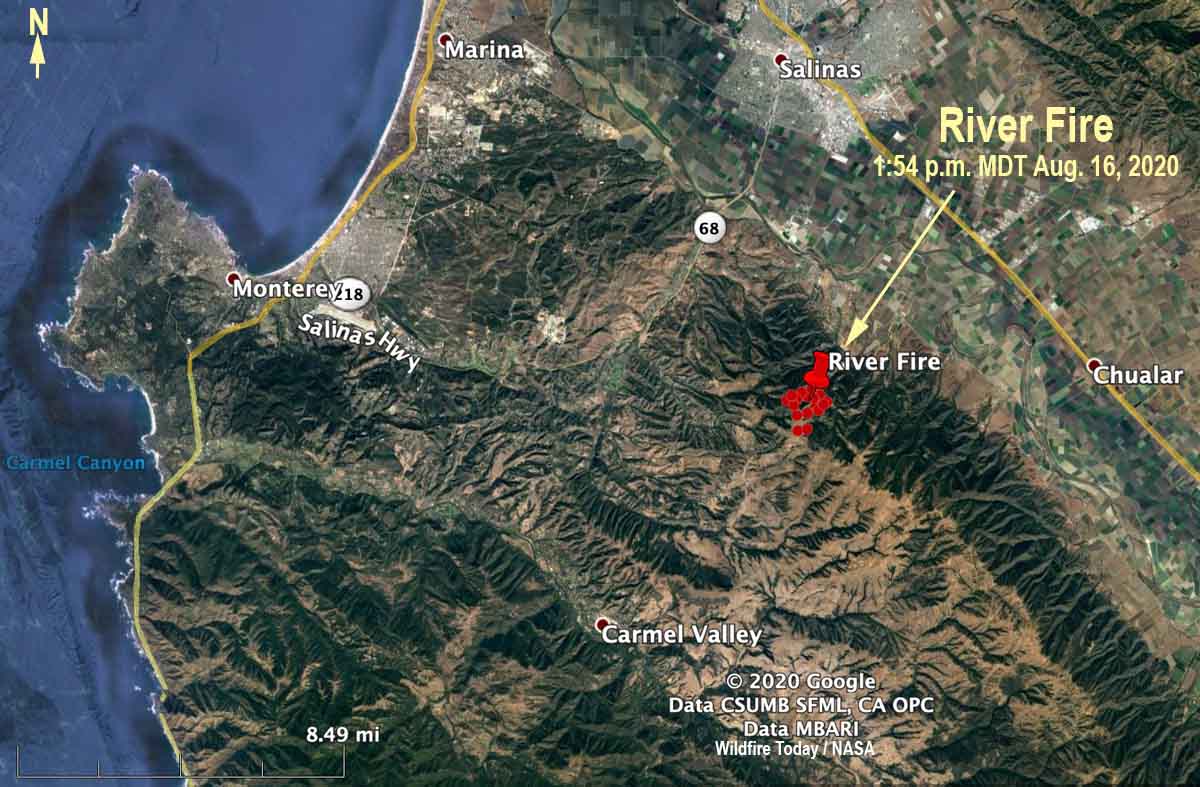
CAL FIRE said at 5:40 p.m. Sunday that the River Fire reported at 3:14 a.m. PDT Sunday morning had burned 500 acres. It is in northern California about 5 miles south of Salinas and 6 miles northeast of Carmel Valley. Evacuations are in effect.
Sunday afternoon the wind recorded at the Rana Creek Tower near the fire was out of the north at 6 to 12 mph with gusts between 12 and 18. After 6 p.m. it switched to come out of the southwest at 10 mph with gusts to 13, pushing the fire to the northeast toward the valley. The relative humidity in the afternoon was around 30 percent with the temperature in the high 80s.
The forecast for Monday is for a high temperature around 90, relative humidity in the afternoon of 35 percent, and wind out of the west at 5 to 10 with gusts up to 21 in the afternoon.
The area has not been visited by fire for many years, so there should be abundant fuel available, offering firefighters a high resistance to control.



